Bamboo is an environmentally friendly, durable and beautiful material that is widely used in various applications, from interior decoration to outdoor fences. However, to protect bamboo from weather elements and enhance its aesthetics, you may want to paint its surface.
So can you paint bamboo screening (aka bamboo fence)? And how to paint bamboo fences effectively? In this article, we will introduce you to some tips and basic steps when painting bamboo screening and bamboo fences.
Contents
1. What kind of paint do you use on bamboo? Which paint is best for bamboo fences?
Painting bamboo fences can be a practical and aesthetically pleasing way to enhance their durability and appearance. However, selecting the right paint is crucial to ensure a long-lasting and visually appealing finish.
The choice of paint for bamboo should take into consideration the unique characteristics of this natural material.
1.1 Acrylic Paint
Acrylic paint is a popular choice for bamboo fences due to its versatility and durability. It adheres well to the surface, dries quickly, and provides a protective layer against the elements.
Moreover, acrylic paint is available in a wide range of colors, allowing homeowners to express their creativity and match the fence with the overall aesthetic of their outdoor space.
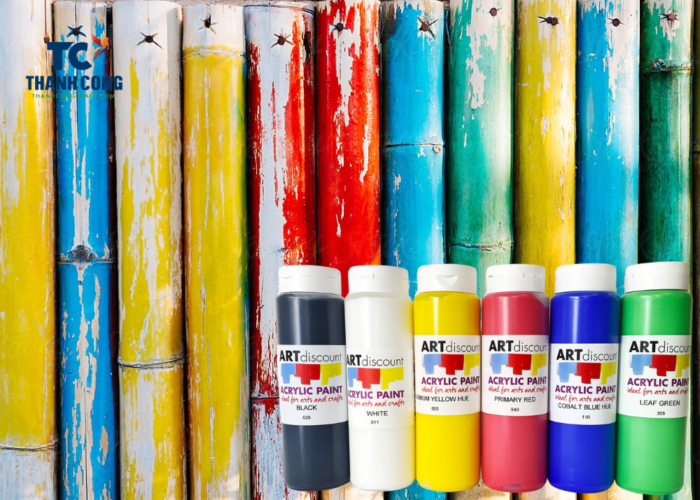
1.2 Outdoor Paints
Opting for paints specifically designed for outdoor use is essential when painting bamboo fences. These paints are formulated to withstand the challenges posed by weather conditions, UV rays, and temperature fluctuations. Look for exterior or outdoor-grade paints that offer resistance to fading, cracking, and peeling.
1.3 Bamboo Sealers
Bamboo sealers are another option to consider, especially if you want to preserve the natural color and texture of the bamboo. These sealers are designed to protect bamboo from moisture, pests, and sunlight.
While they may not provide the color variety of paints, they enhance the fence’s durability and maintain its organic appearance.
1.4 Oil-Based Paints
Oil-based paints are known for their durability and resistance to harsh weather conditions. They create a robust protective layer on the bamboo surface. However, it’s important to note that oil-based paints may take longer to dry and can emit strong odors during the application process.
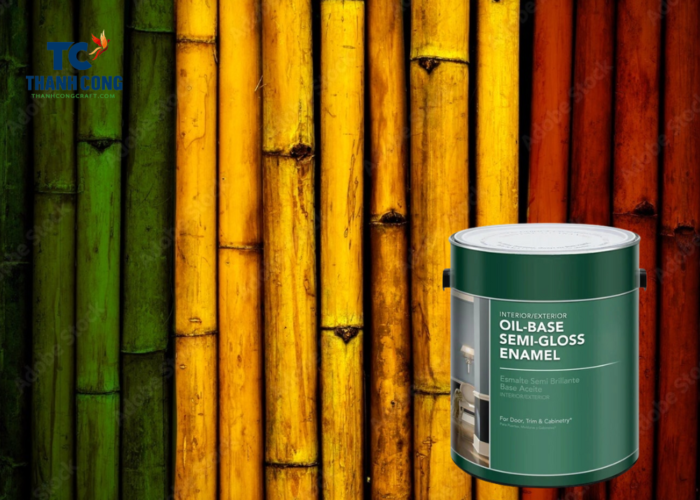
1.5 Pre-treatment with Wood Preservatives
Before applying paint, consider treating the bamboo with a wood preservative. This step helps protect the bamboo from rot, insects, and decay. Once the bamboo is properly treated, it becomes a more suitable canvas for paint application.
1.6 Bamboo-Friendly Primers
Using a primer designed for bamboo or wood surfaces can enhance the adhesion of the paint and contribute to a smoother finish. Primers help create a strong bond between the paint and the bamboo, ensuring better longevity and resistance.
2. How to paint bamboo fences?
Painting bamboo fences is a straightforward process that, when done correctly, can enhance both the appearance and durability of the fence.
Here’s a step-by-step guide on how to paint bamboo fences:
Step 1: Prepare tools and materials
You will need: brush, paintbrush, cloth, solvent, oil paint or acrylic paint, anti-mold and waterproofing agent.
Step 2: Clean the bamboo fence
You should wipe the dust and dirt on the surface of the bamboo with a damp cloth or solvent. If there is mold or fungus growing on the bamboo, you should use an anti-mold agent to remove them.
Step 3: Paint the primer for the bamboo fence
You should choose the type of primer that matches the type of paint you will use to paint the topcoat. The primer helps increase the adhesion of the topcoat and protect the bamboo from moisture and termites.
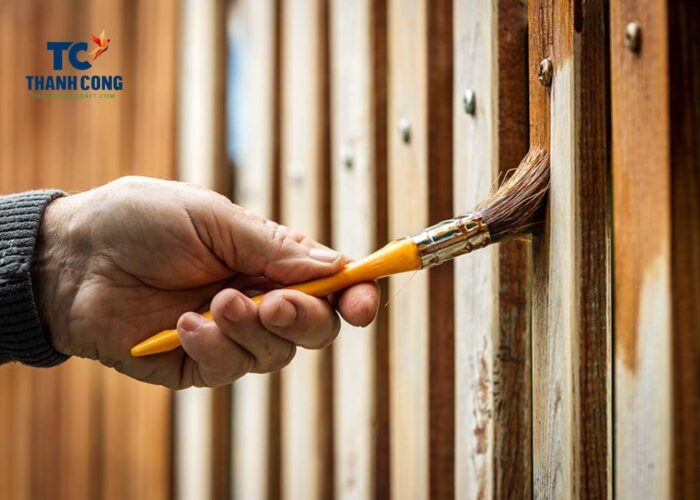
Step 4: Paint the topcoat for the bamboo fence
You can choose the color according to your preference or match the style of the house and garden. You should paint two coats to ensure the best coverage. You should leave a drying time between two coats according to the manufacturer’s instructions.
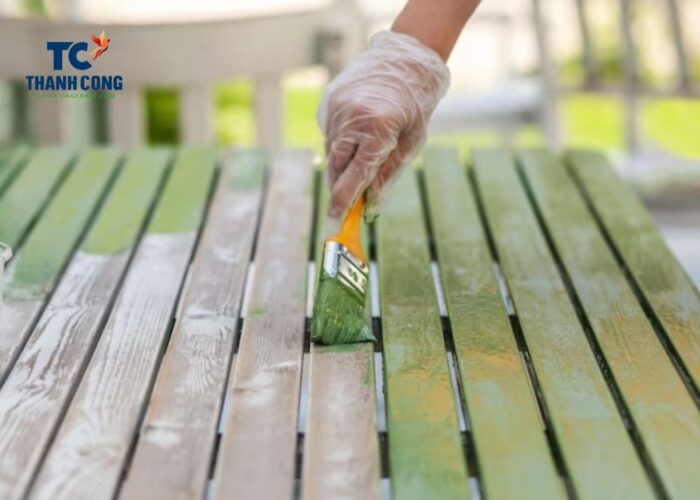
Step 5: Preserve and maintain the bamboo fence
You should check the condition of the bamboo fence regularly and repaint when necessary. You should also avoid exposing the bamboo fence to heat or fire sources.
3. FAQs
3.1 Does paint stick to bamboo?
Yes, paint can adhere to bamboo surfaces, but proper preparation and selection of the right type of paint are essential for a successful and durable finish. Bamboo has a natural smoothness and roundness, which can make adhesion challenging if not addressed appropriately.
To ensure that paint sticks to bamboo effectively:
- Clean the Surface: Remove any dirt, dust, or contaminants from the bamboo surface. Wiping it down with a clean, damp cloth or sponge before painting helps create a suitable canvas for paint adhesion.
- Smooth the Surface: If the bamboo has rough or uneven areas, use fine-grit sandpaper or a sanding block to smooth out the surface. This step enhances the bond between the bamboo and the paint.
- Use Primer (Optional): Applying a bamboo-friendly primer can improve paint adhesion and contribute to the longevity of the painted finish. The primer creates a base layer that helps the paint adhere more effectively.
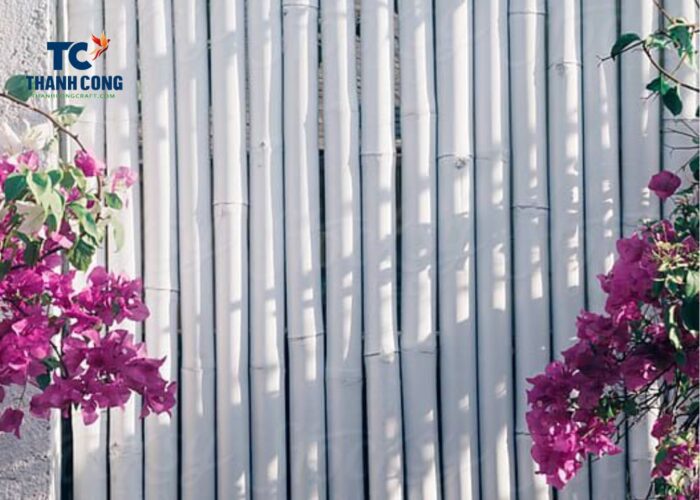
- Choose the Right Paint: Opt for an outdoor-grade paint that is suitable for bamboo surfaces. Acrylic paints, oil-based paints, or paints specifically designed for outdoor use work well. Ensure the paint is compatible with bamboo and can withstand exposure to the elements.
- Follow Proper Painting Techniques: Whether using a paintbrush or a spray gun, apply the paint evenly, following the natural grain of the bamboo. Multiple thin coats are often more effective than a single thick coat. Allow each coat to dry completely before applying the next.
By taking these steps, you can ensure that paint adheres to bamboo surfaces effectively, providing a durable and visually pleasing finish for bamboo fences or other bamboo structures.
3.2 Can you paint bamboo slat screening?
Yes, you can paint bamboo screening with fence paint to create a fresh look for your outdoor space. However, it’s important to follow proper preparation and painting techniques to ensure a successful and long-lasting finish:
- Clean the bamboo blinds by using a brush and soapy water to remove dirt, mold, and algae. Then, let them dry completely.
- Use sandpaper to gently sand the surface of the bamboo, helping the paint adhere better. Choose sandpaper with a low grit to avoid damaging the bamboo.
- Choose a type of paint suitable for bamboo, such as oil-based paint, acrylic paint, or water-based paint. Avoid using oil-based paints as they can make the bamboo moist and cause cracking. Also, choose a paint color that harmonizes with the natural color of the bamboo or suits your style.
- Use a brush or roller to evenly apply the paint to the bamboo blinds, following the direction of the bamboo slats. Paint from top to bottom and from inside to outside to avoid creating uneven paint strokes. It’s recommended to paint both sides of the blinds for increased durability and aesthetics.
- Let the paint dry completely according to the manufacturer’s instructions. You may need to apply two or three coats to achieve the desired effect. After finishing painting, clean up and store the brush or roller properly.
3.3 When should I stain my bamboo fence?
The timing for staining a bamboo fence depends on several factors, including the age of the bamboo, weather conditions, and the specific stain or sealant you plan to use. Here are some general guidelines to help you determine when to stain your bamboo fence:
- New Bamboo Fence: If you have a newly installed bamboo fence, it’s advisable to wait for the bamboo to acclimate to its environment before applying any stain or sealant. This can take several weeks to a few months, allowing the bamboo to adjust to humidity, temperature, and other external factors.
- Weather Conditions: Choose a period when the weather is dry and mild. Staining a bamboo fence in dry conditions ensures that the stain or sealant can properly penetrate the bamboo and adhere effectively. Avoid staining the bamboo during rainy or extremely humid periods, as excess moisture can interfere with the staining process and affect the quality of the finish.
- Bamboo’s Natural Color Fading: If you notice that the natural color of the bamboo is fading or the surface is becoming weathered, it may be time to consider staining. Staining helps restore color and provides added protection against the elements.
- Bamboo Preservation: If your primary goal is to preserve the bamboo and protect it from insects, decay, and weathering, consider staining as a preventive measure. Ideally, this should be done before signs of deterioration become evident.
- Manufacturer Recommendations: Refer to the specific recommendations provided by the manufacturer of the stain or sealant you plan to use. Different products may have varying application instructions and recommended weather conditions.
- Regular Maintenance Schedule: Establish a regular maintenance schedule for your bamboo fence. Staining every 2-3 years, or as recommended by the stain manufacturer, can help maintain its appearance and structural integrity.
By following the above steps on how to paint bamboo fences, you can enhance the appearance of your bamboo fence while providing protection against the elements.
If you have any further questions, don’t hesitate to send thanhcongcraft an email us at info@thanhcongcraft.com or message us at WhatsApp: +84967485411. Hope to serve you soon! Best regard!












